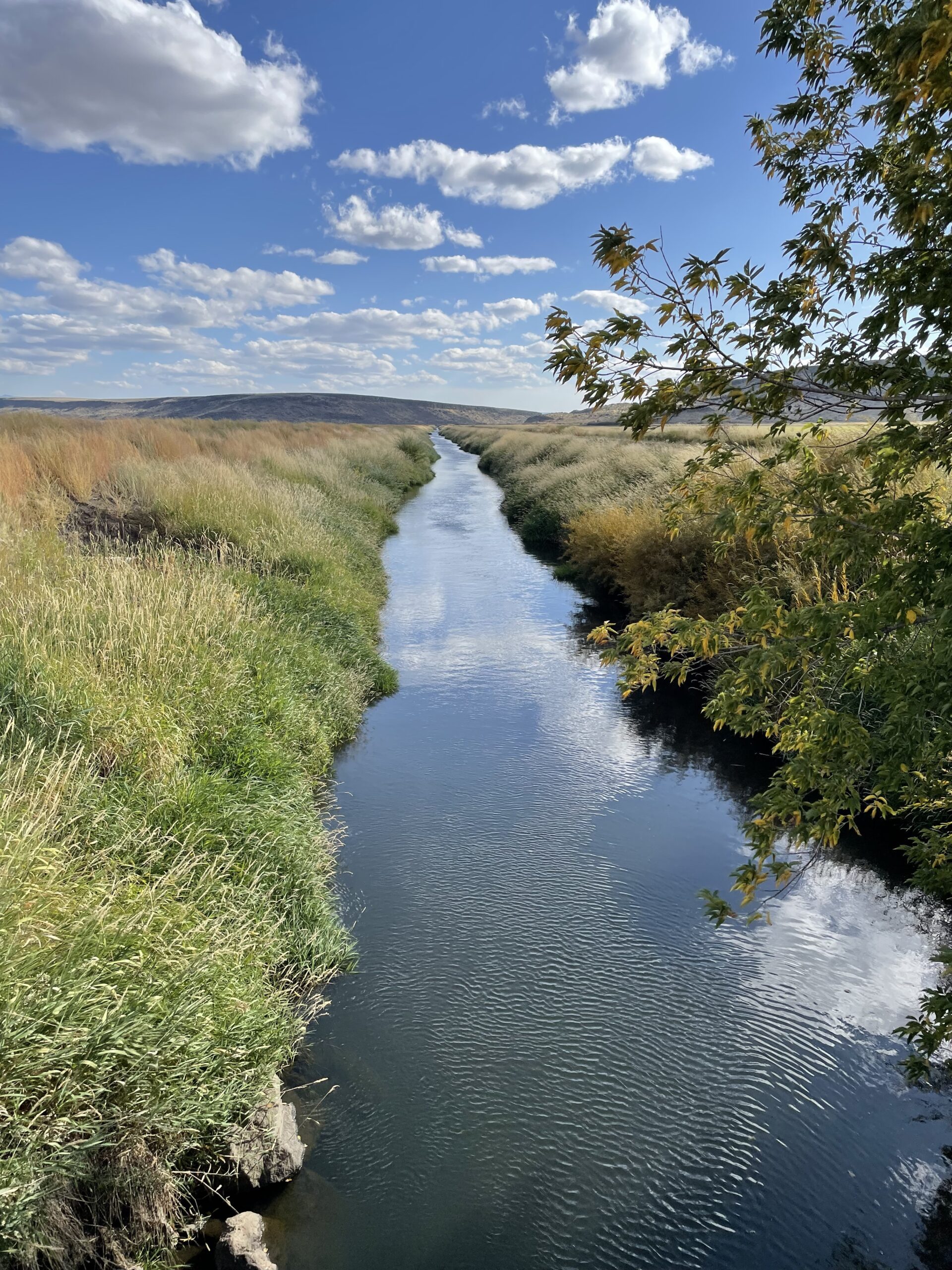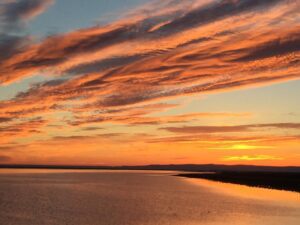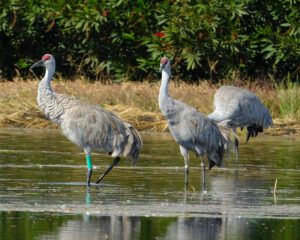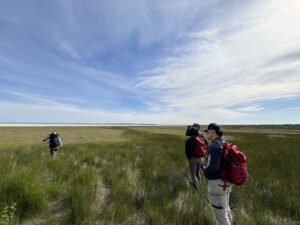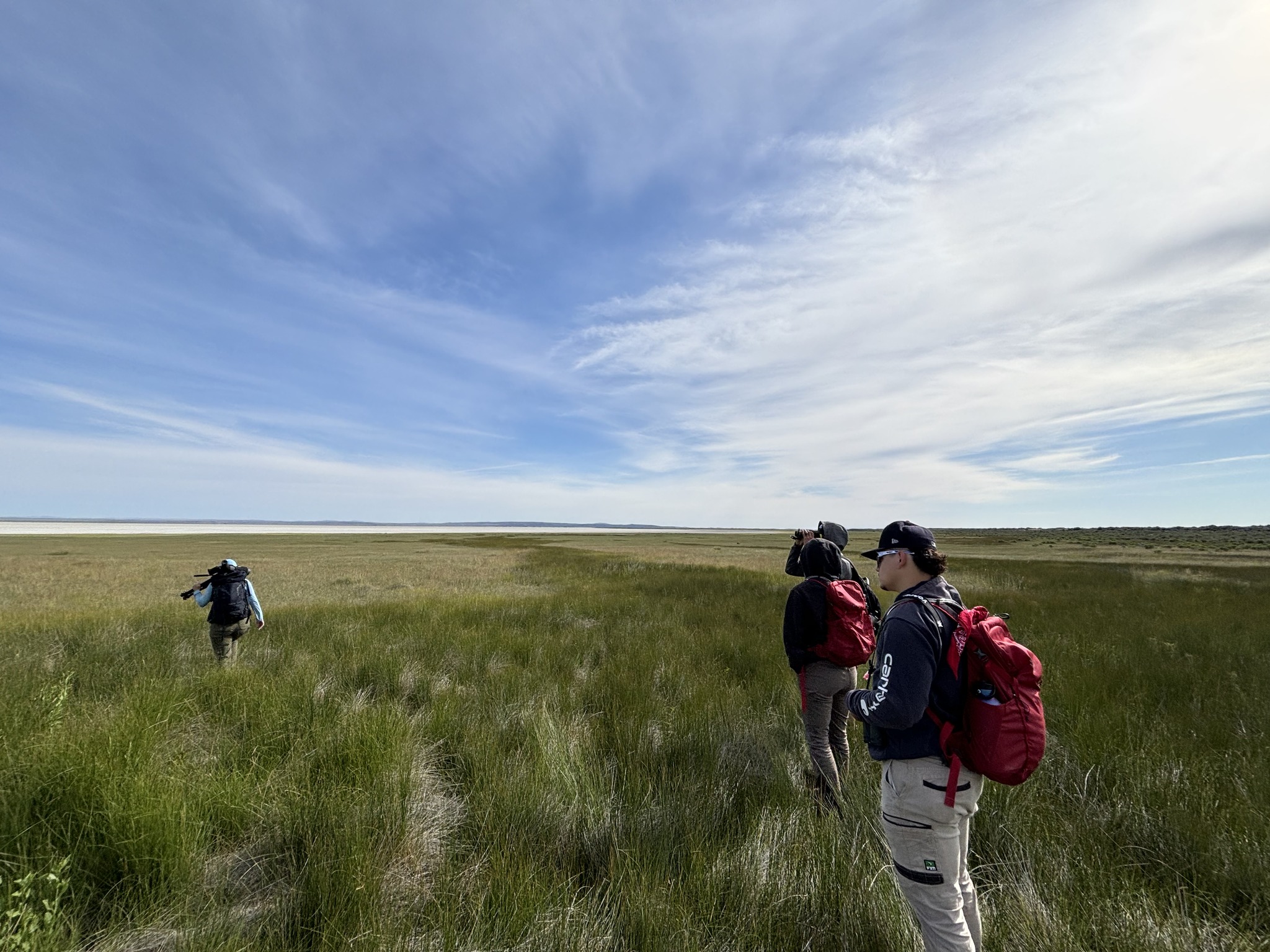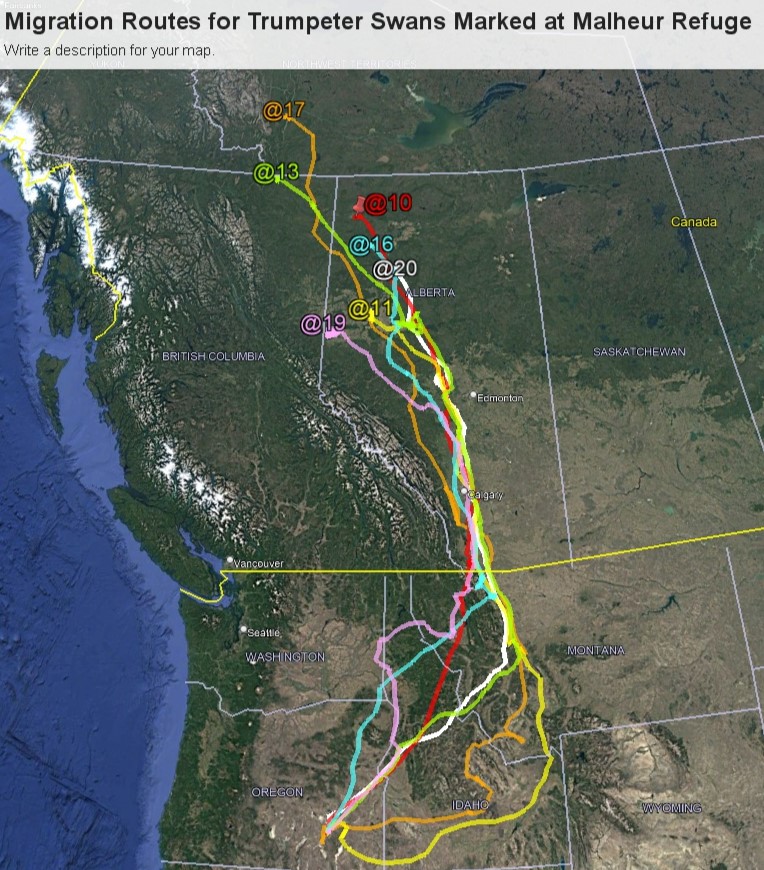Written by Michele Weaver, Emma Neill, and Jessica Diaz – Oregon Department of Fish and Wildlife
Photos by Michele Weaver
The Oregon Department of Fish and Wildlife, along with Washington Department of Fish and Wildlife and Xerces Society for Invertebrate Conservation was recently awarded a US Fish and Wildlife Service grant to advance the understanding of freshwater mussel populations across the region. For the past three months two crews (one in Washington and one in Oregon) have been traveling across the two states in search of freshwater mussels. During the week of Sept 18, the Oregon crew got to visit the Malheur NWR and spend the last week of our field season surveying the waters in and around the refuge for these amazing animals.

The Malheur NWR is home to all three of our native mussel species, making it an especially exciting place to survey. This week we have spent time in Silver Creek and the Double O and Golden Canals, McCoy Creek, Diamond Ditch, and in several spots along the Donner und Blitzen River. At the end of the week, we explored some of the area around Mann Lake looking for mussels in areas that, to our knowledge, have not been surveyed previously.
Freshwater mussels are a key component to a healthy ecosystem providing tremendous benefits to the aquatic community. They are filter feeders that help keep the waters clean and burrow into stream bottoms helping to maintain habitat stabilization. They provide food for other organisms by packaging up the nutrients filtered from the water and excreting them in a form that other animals can eat. They can also be prey themselves for other animals such as river otters. One of the most unique characteristics is the part of their life history which requires a fish host to complete. The larval mussels, called glochidia, will attach to their host fish gills or fins for a brief time to develop into juvenile mussels. The fish will transport the juvenile mussel to their future home and when the juvenile mussel drops off the fish it burrows into the river bottom where it will spend the rest of its life, which can be several decades.
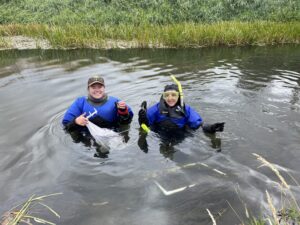
To survey for mussels, crews use snorkeling gear. This allows us the birds eye view to count the animals while minimizing any disturbance to the habitats the mussels are living in. Because of the pretty chilly water temperatures, we use dry suits to help us stay a little more comfortable. According to one of the crew members, it’s like a game of “I spy” where the person who finds the most mussels win. They can be very cryptic well camouflaged. They will often burrow into the softer river bottom almost completely so that only their syphons are visible.
For the sampling crew, usual field accommodations include pitching a tent for the night at whatever camp spot they can find nearby and then moving on to another site the next day as the mussel search continues. This week the crew got to stay at the P-Ranch, providing a much-appreciated change in pace and wonderful scenery to enjoy after work hours, not to mention a place to warm up after the frigid time spent in the local creeks! This was a fantastic place to end our field season at. We greatly appreciate the hospitality of the Malheur NWR and look forward to visiting again in the future.

